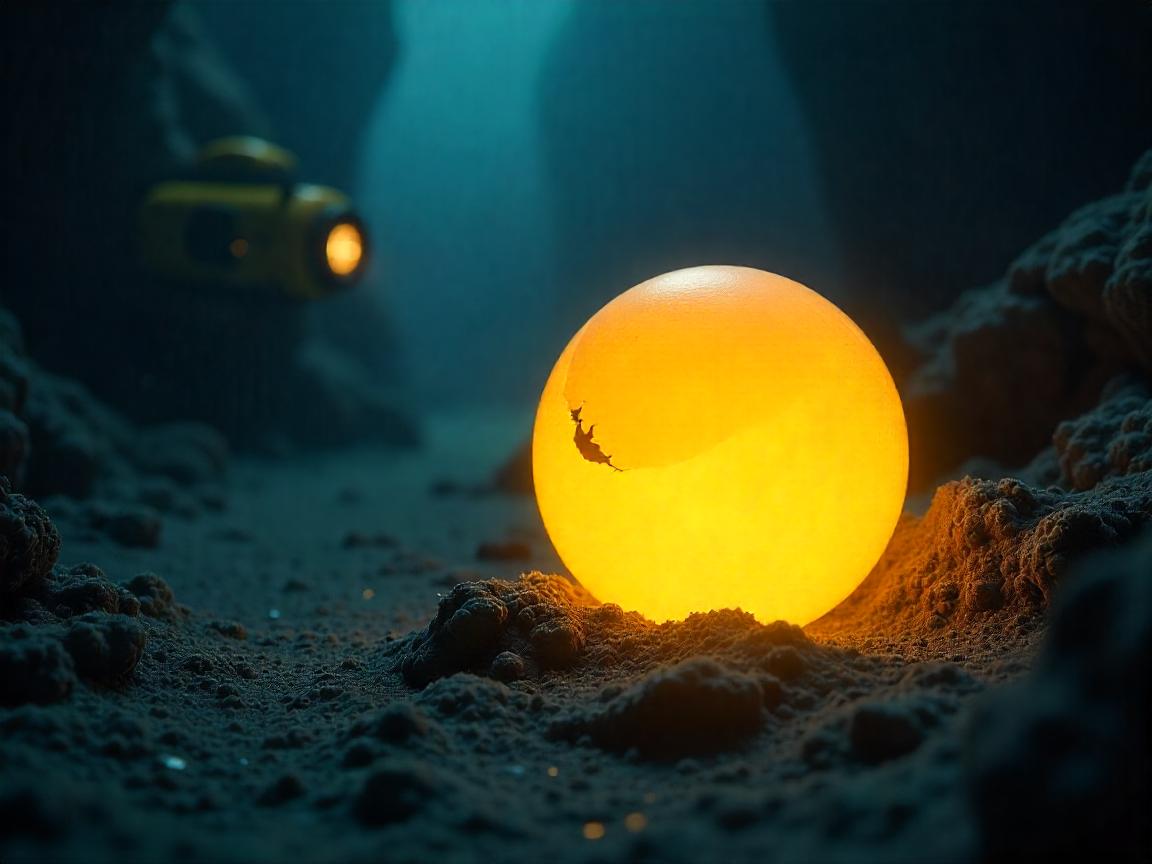
A Glowing Enigma in the Abyss
As you go down to the suffocating darkness of the Pacific, where the sun does not pass, and you land on an object that seems to be an element of a sci-fi film. It is exactly what occurred in August of 2023 when the Okeanos Explorer of NOAA observed a smooth, golden orb that was just floating around an underwater volcano by the coast of Alaska. The thing is, this weird dome, which is 3,300 meters deep, made even the seasoned marine biologists rub their heads. Was it an egg? Was it a new mineral formation? Or something quite unknown?
The discovery, which was broadcasted in real-time to the whole world, instantly became viral. Our deep-sea adventures usually presented some strange things, but then there was something different. It had a shiny metallic look and a weird texture that could not be easily classified. Lead scientist Dr. Sam Candio had to agree that they were not even certain whether it is biological or geological. It is that peculiar.”
Cutting-Edge Science Meets Deep-Sea Detective Work
The team of NOAA did not simply admire the orb, but took samples with the help of robotic arm. Preliminary laboratory analyses were non-infectious. There was no DNA identification in the marine databases. Nothing distinctive of the mineral. The riddle was further dark.
Possible explanations?
- A case of an egg of a deep sea predator such as the elusive bigfin squid (with egg sacks looking like jelly).
- A “mat” by microbe like the Golden Jelly around the hydrothermal vents.
- A geologic weirdness, such as a manganese nodule with an organic covering.
To give context, in the year 2016, a purple sock-like creature was discovered near California by scientists. Years later, it was found that it was a Xenoturbella, a primitive worm which rewrote evolutionary biology. And was this a “Golden Egg” as revolutionary?
Expert Insight: Why This Discovery Matters
Dr. Samantha Joye a deep-sea microbiologist put it blatantly as follows; Whenever we think we have seen it all, the ocean reminds us of our humbleness. She marks that the ocean floor is only detailed in less than 20 percent. Mars surface is better understood than our abyss.
Real-world implications?
- Biodiversity: More than 80 percent of the ocean species are unknown (World Wildlife Fund).
- Climate science Deep-sea organisms have hidden responsibilities in carbon storage.
- COVID-19 tests: Medical breakthroughs resulting in the use of enzymes produced by deep-sea microbes.
The Bigger Picture: Ocean Exploration’s Urgent Need
The twist? NOAA currently devotes only 0.05 percent of NASA in exploring the deep seas. However, each expedition brings surprises such as the Casper octopus that was protecting its eggs on hydrothermal vents back in 2016.
Case Study-Yeti Crab- The Yeti Crab found in 2005 cultivates bacteria on its hairy arms. It changed our perception of symbiosis. Is there another game-changer called the Golden Egg?
Final Thought: The Ocean’s Last Secrets
Decoding the “Golden Egg” could be a process that will take years. However, it is obvious, that the sea depth is not only a cemetery of sunken ships but the living and developed frontier as well. We are not just exploring the ocean as Dr. Joye puts it. We are getting to know ourselves.”
What’s next? Follow the dives of the NOAA (#OkeanosExplorer) or sponsor some marine research. Since the very next golden mystery? That is waiting out there.
